Corporate Branch Control and Operations Training: Audit Review
VerifiedAdded on 2023/06/05
|36
|2661
|144
Report
AI Summary
This report provides a comprehensive overview of a branch control and operations training program, focusing on the objectives, functional approach, and scope of branch control. It details the incident reporting process, including the escalation of operational and control errors. The report presents an analysis of internal audit ratings, categorizing them as Meet Expectation, Satisfactory, Need Improvement, and Unsatisfactory. A significant portion of the document is dedicated to the summary of audit findings, covering areas such as cash management, system access, power of attorney, account data, daily vouchers, cards registers, cash area security, stamps, standing instructions, manager's cheques, stop payments, income/expense ledgers, clearing and cheque book operations, organization charts, service level agreements, remittances, and account opening procedures. Each finding is detailed, highlighting non-compliance issues and providing recommendations for corrective measures. The report concludes with a summary of the importance of branch control and operations training in the banking system, emphasizing the significance of the incident reporting process, audit ratings, and adherence to policies and security protocols.
1 out of 36
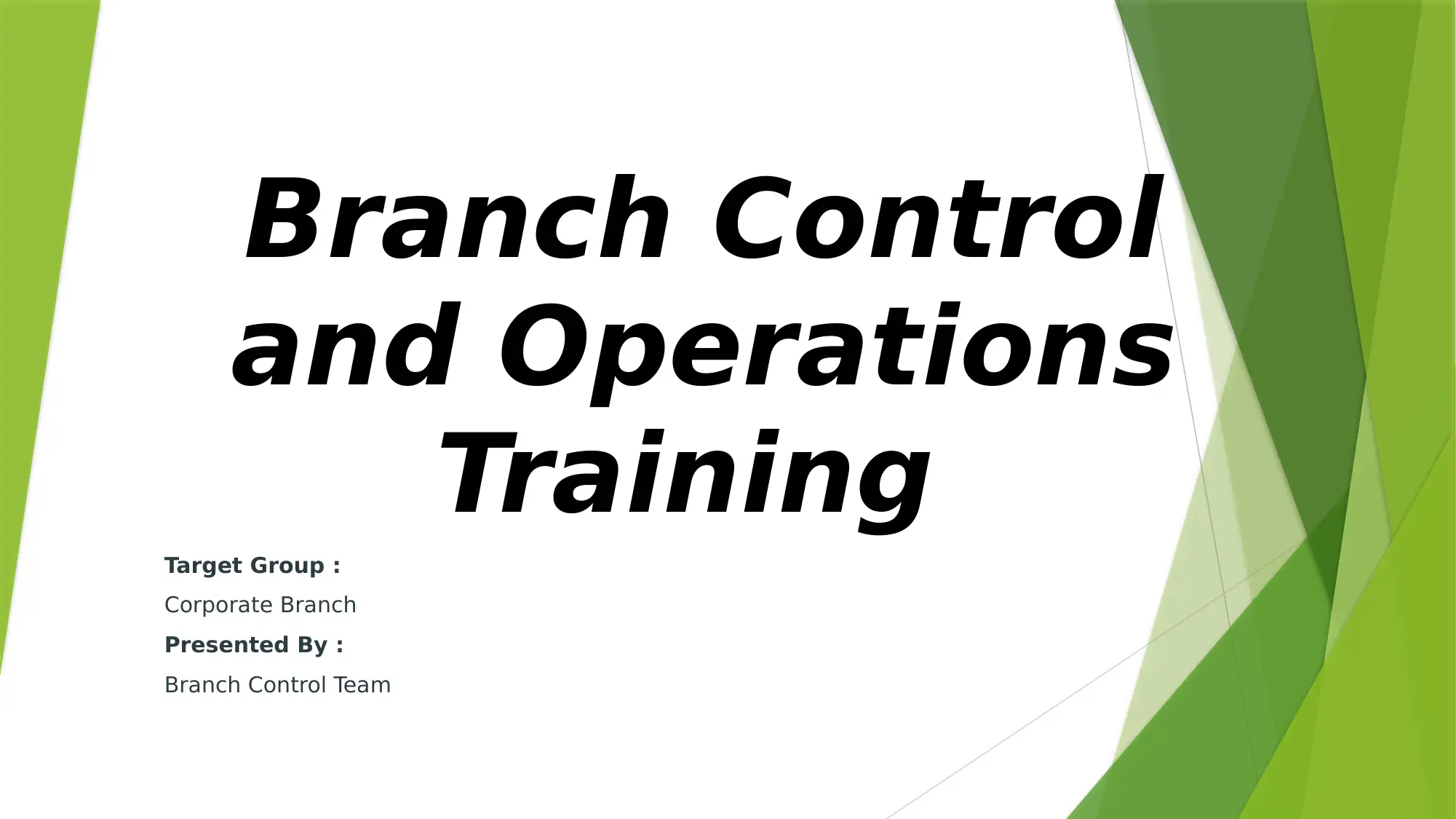

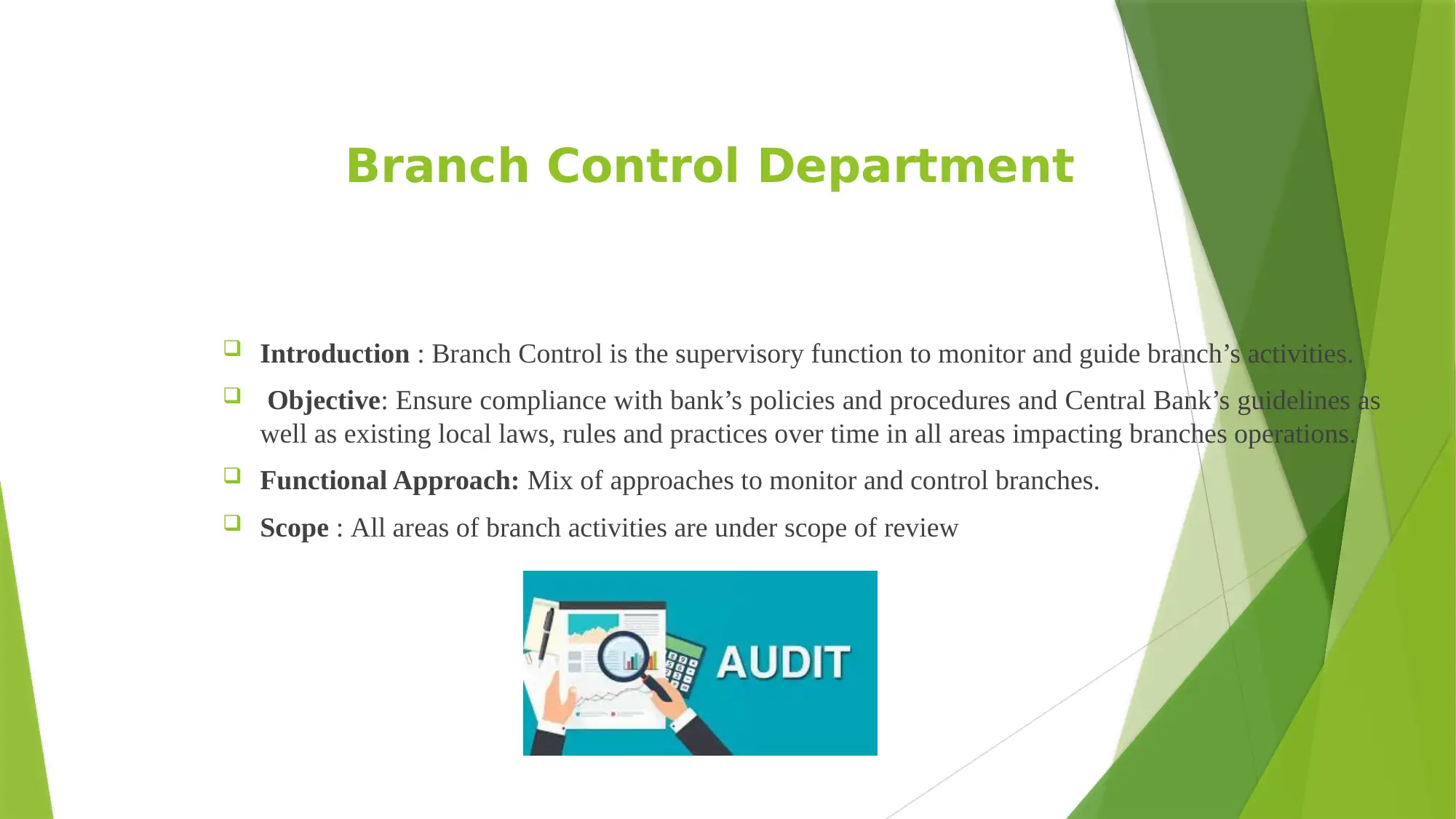

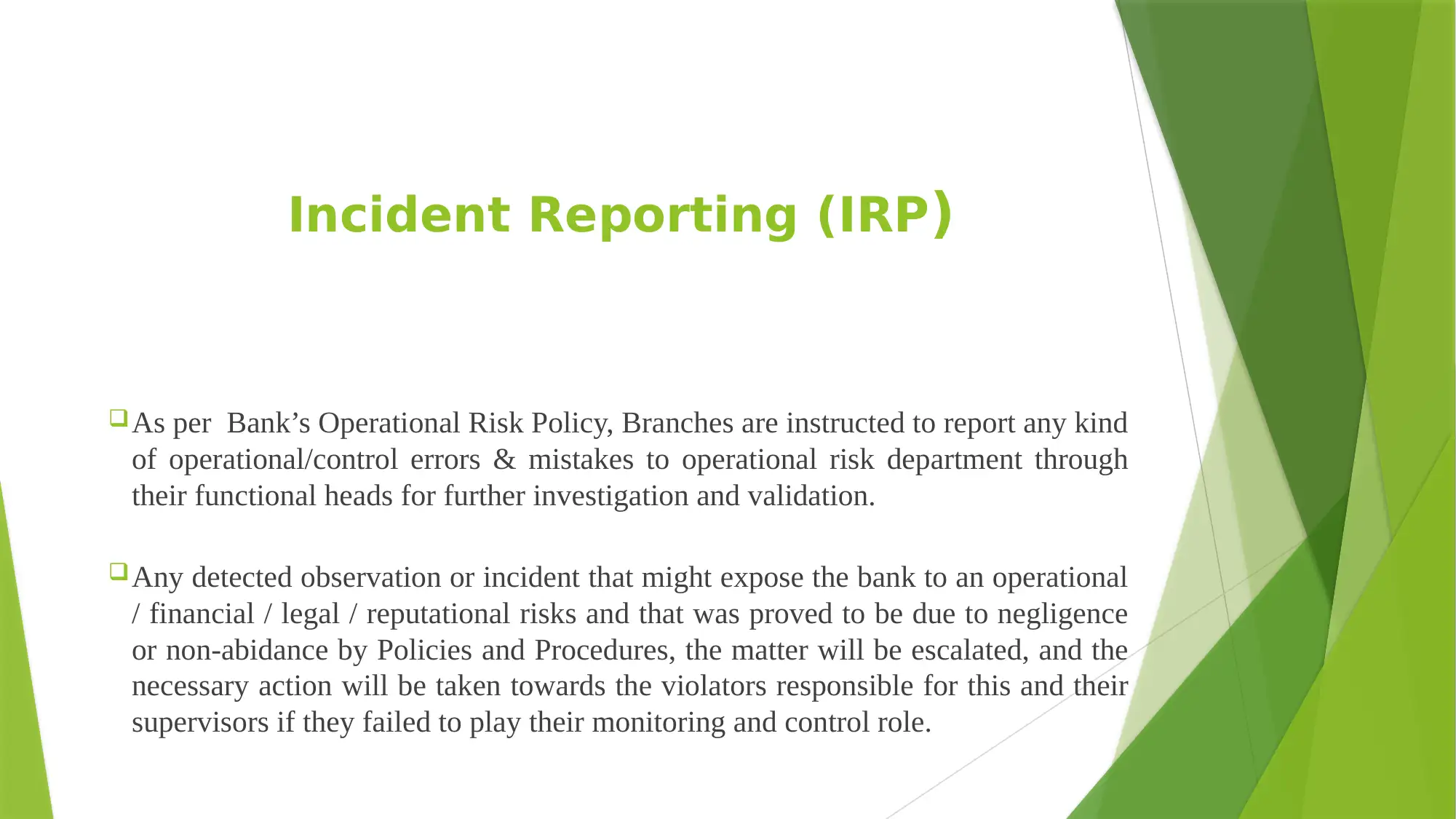
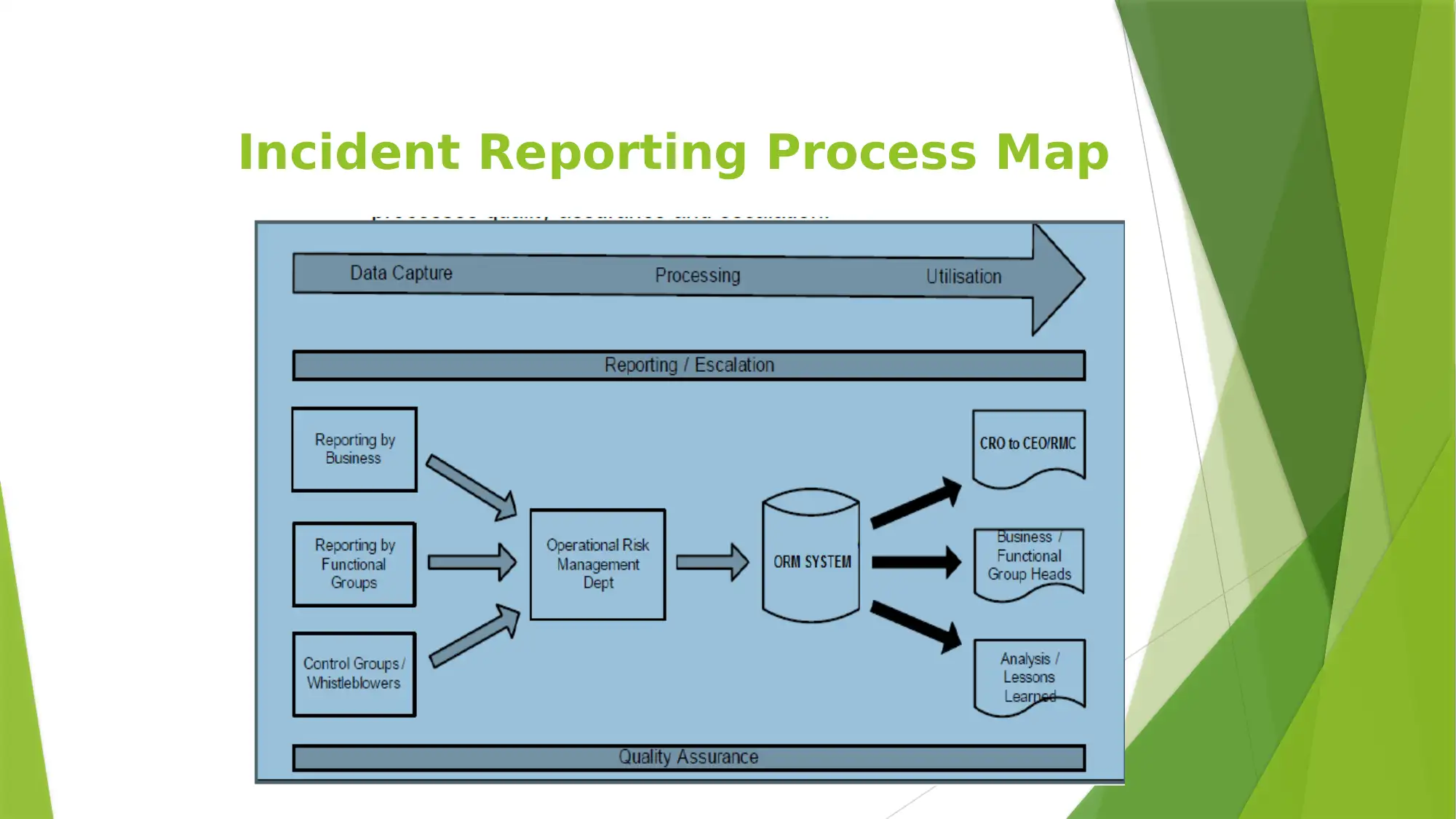
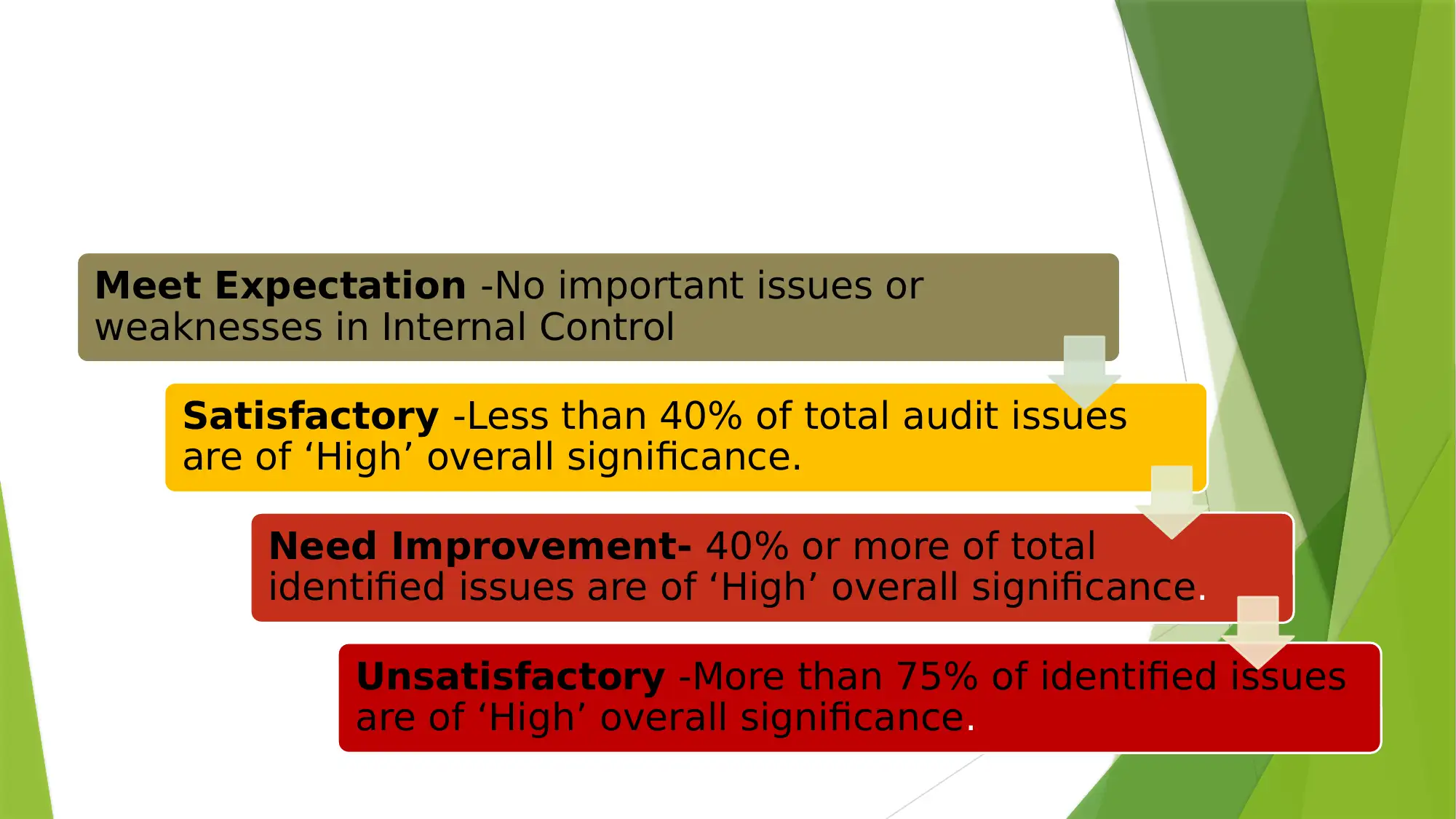
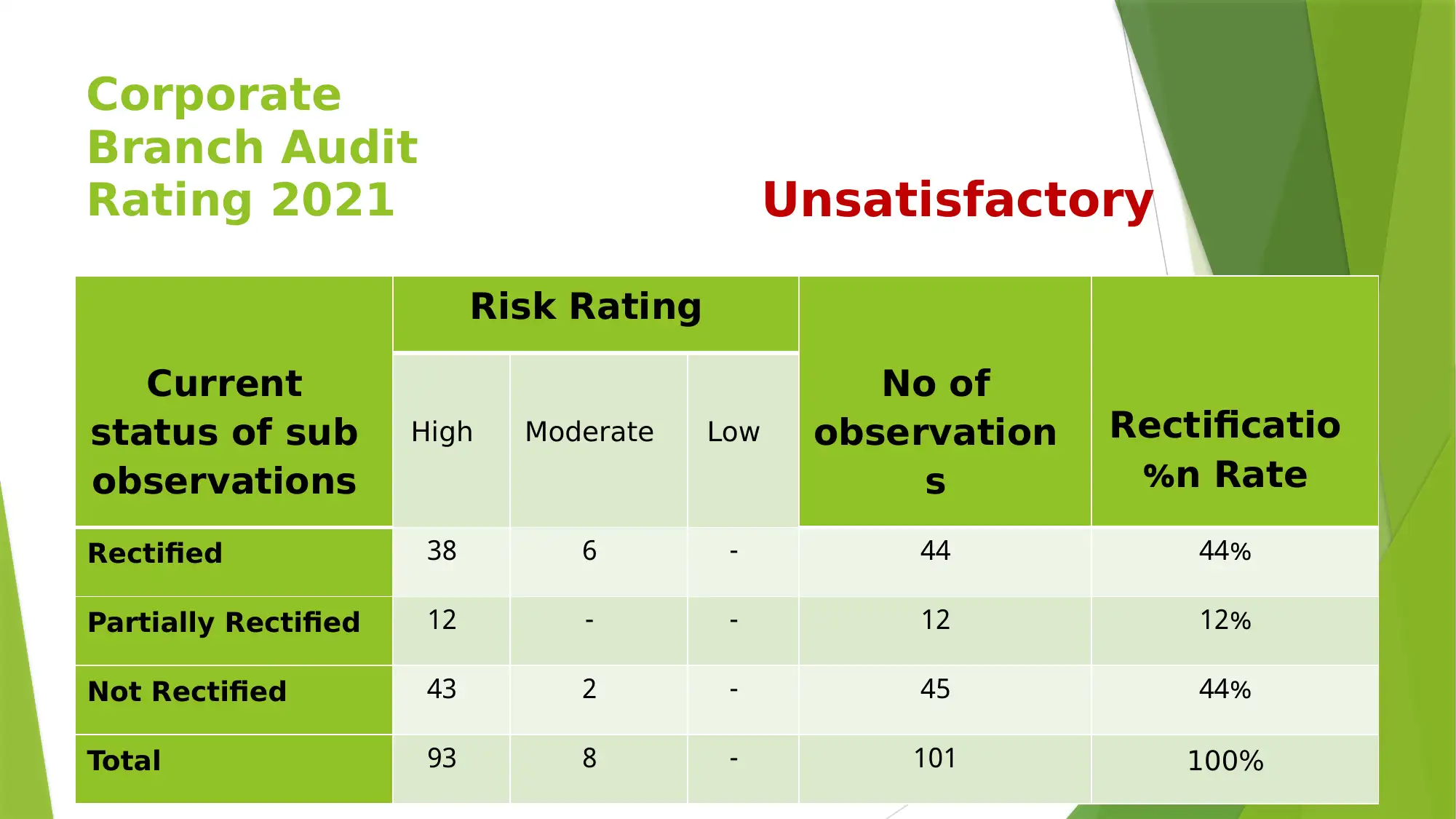
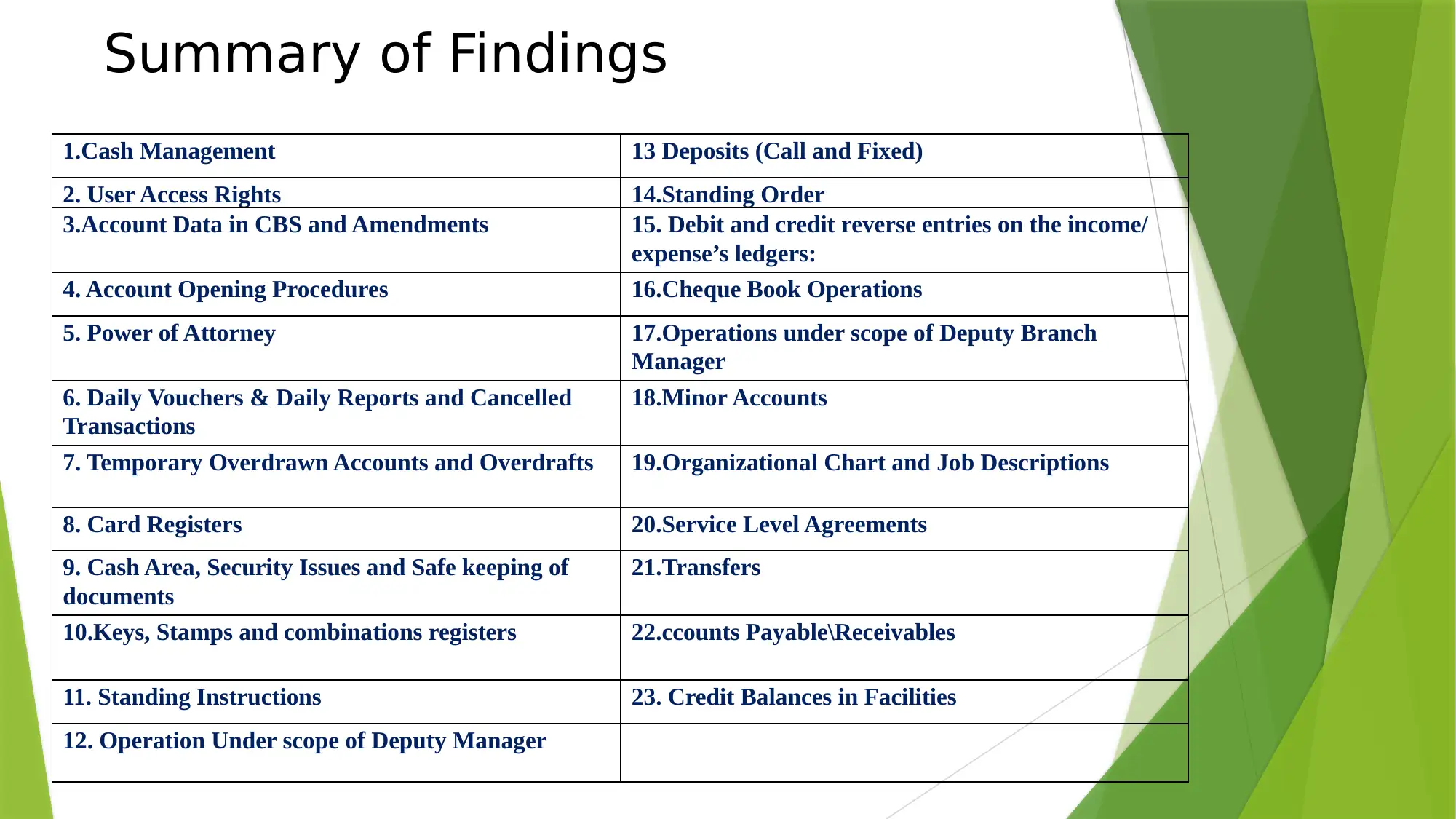
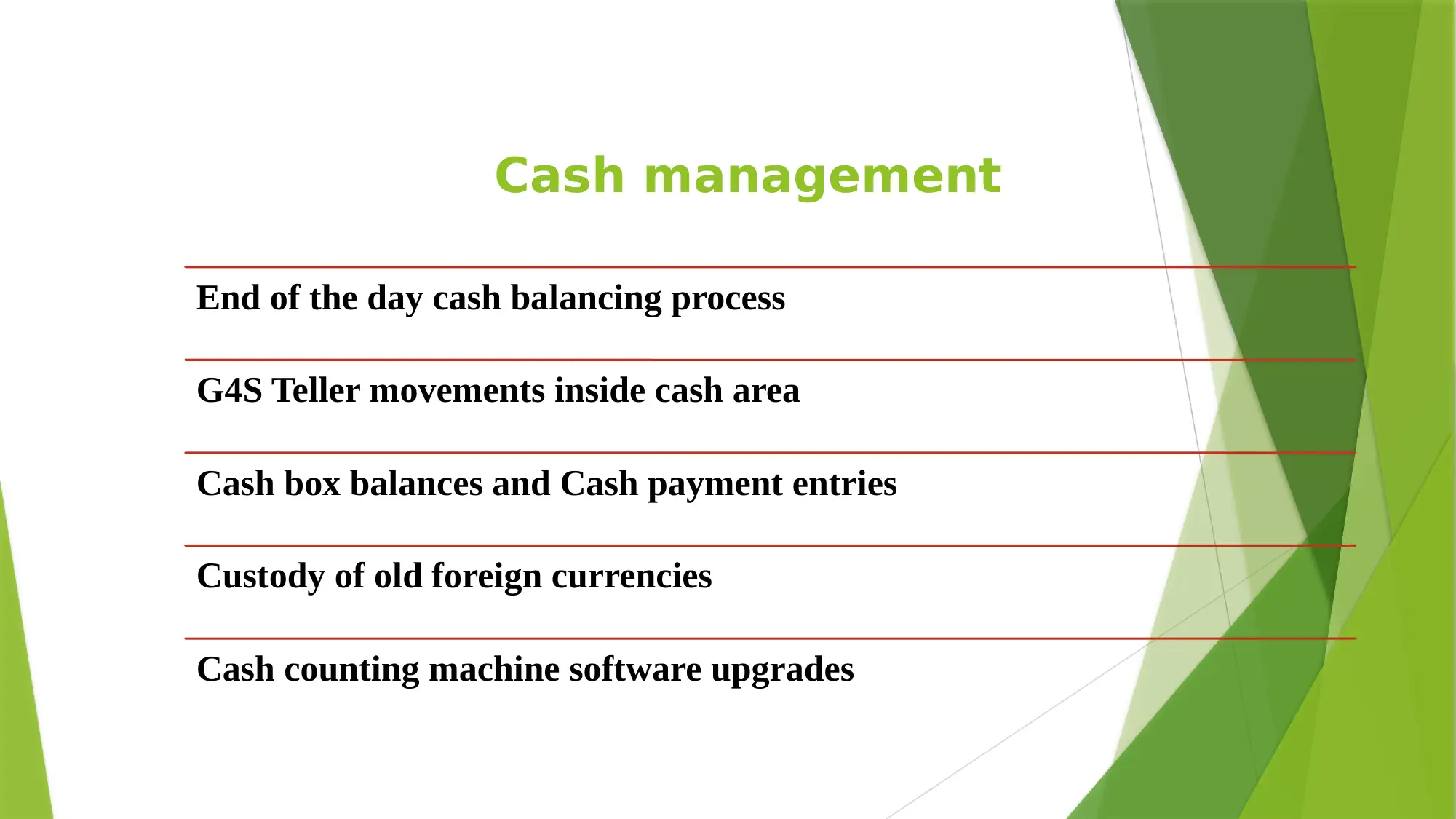
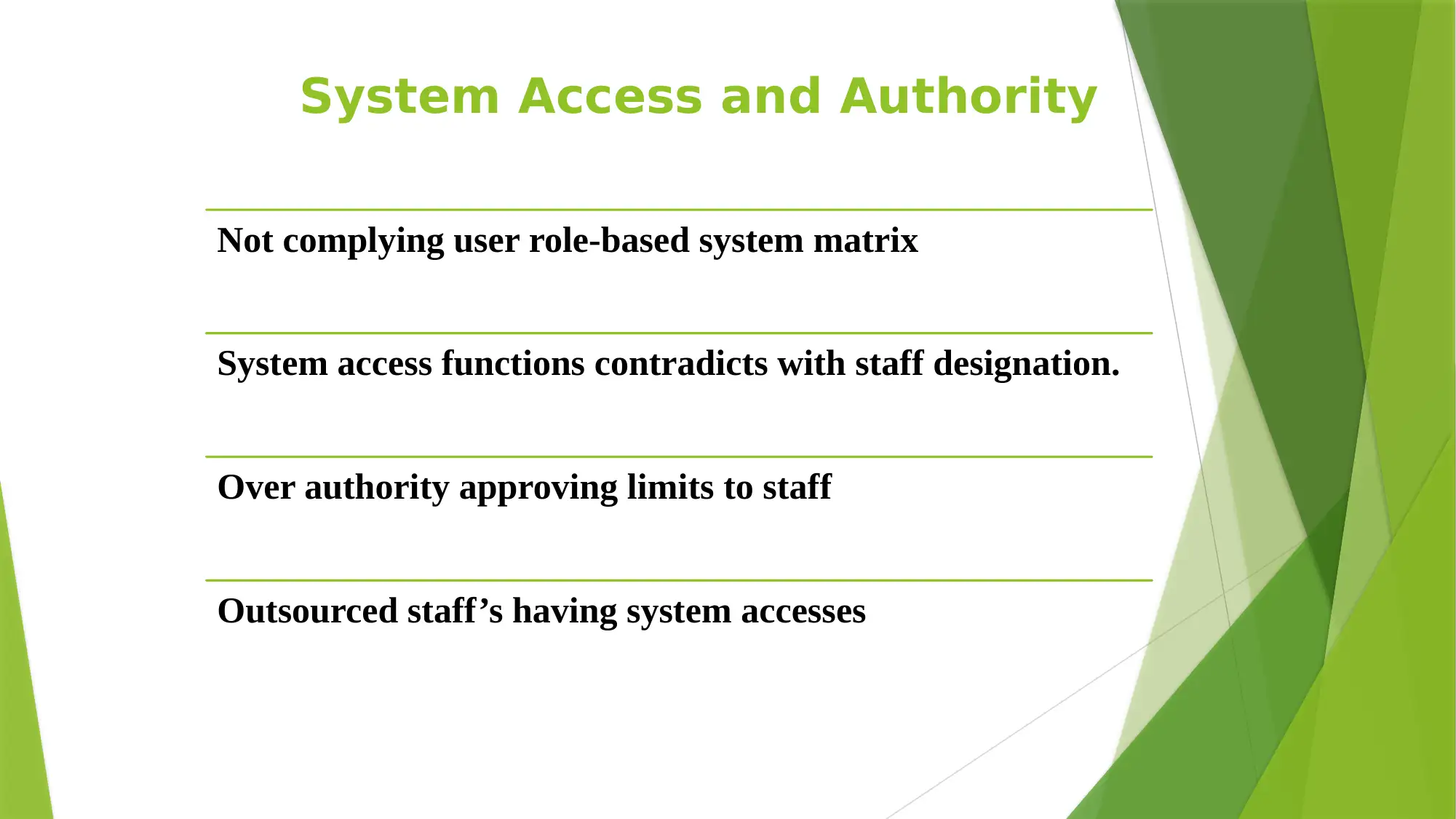

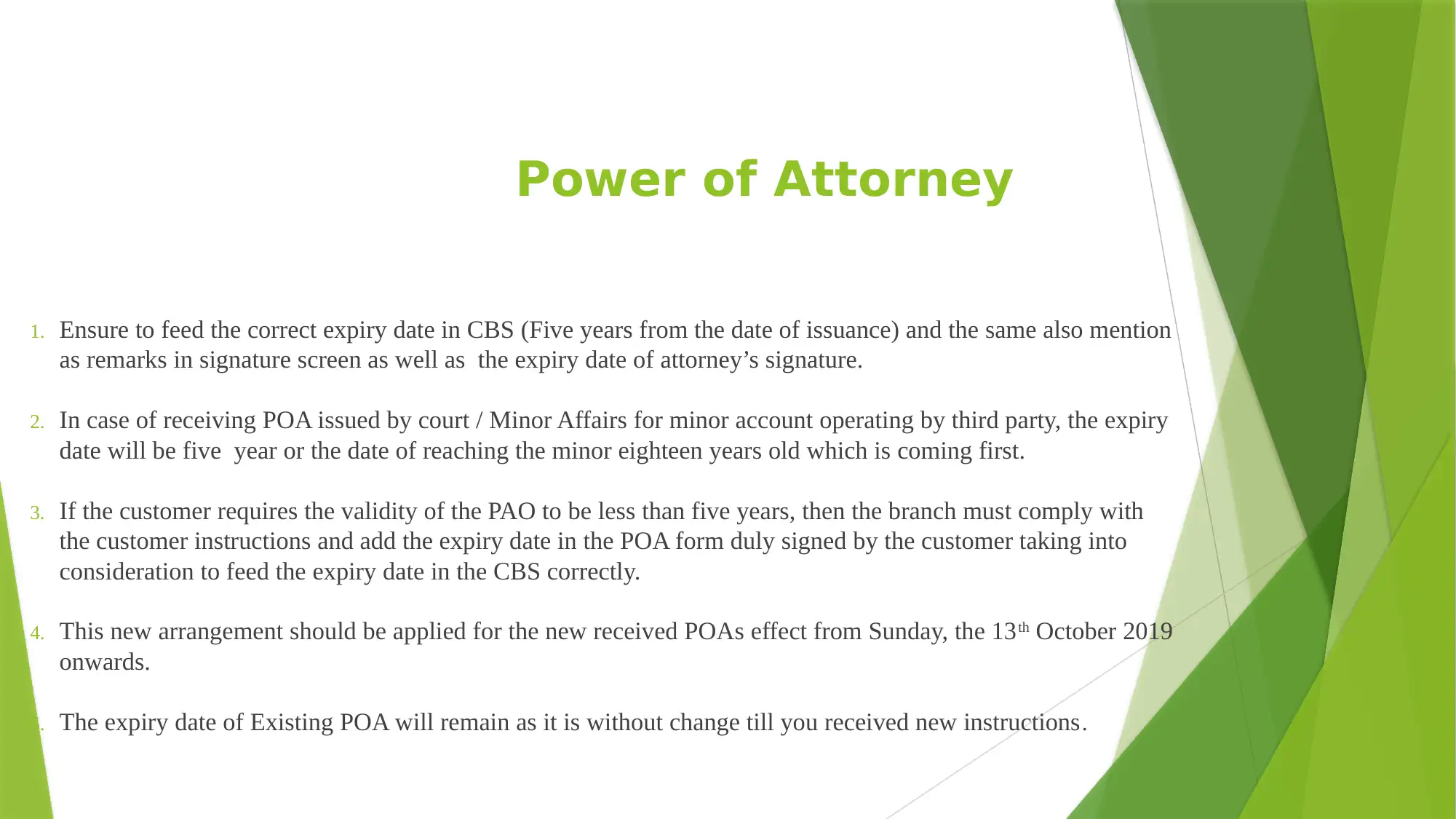






![[object Object]](/_next/static/media/star-bottom.7253800d.svg)